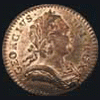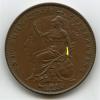Not sure how much of the 1902LT wide date stuff was said in jest but here are comparative pictures of type with bar and slightly wider normal date for reference, also a 'close up' of bar in top of zero, which is sort of straight! Inclined to agree with Rob about varieties, "design and errors", both human introduced rather than machine, e.g. not keen on cannon balls, crow feet, clashed dies being classified as varieties, but they do seem to have found their way into all recognised documentation to date (and CGS), so now have their place. With Victorian Pennies (my main collection) I always find that repairs are the more difficult ones to decide whether to collect because I think probably every letter in the legend has been repaired on one die or another, some much more obvious than others, so where does one draw the line, and what should be termed a variety? Clearly everyone wants an 1860N/Z, but a repaired E in DEF is far less desirable, but still nice to have if it's a real botch job. Then there are date variations and colon dot positions which again vary in location from one die to another, human introduced so perhaps fairly classed as varieties by some authors. For exampIe, I recently looked in detail at my 1851 pennies, no over-dates on that year but we still see different numeral sizes on the 1,5 and 8, and when additionally taking date widths into consideration I found in total I have 12 different date variations.............and that's not a particularly common mintage year. Think this is a subject which collectors will never agree upon, as always looking for something different to collect, and dealers / auctioneers will always market a new 'feature' to aid their sale.....and then a feature sometimes turns into a new variety! Could go on forever but will stop now, expect this will open a can of worms!
 Coinpublications.com
Coinpublications.com


